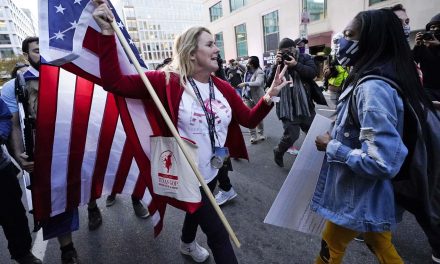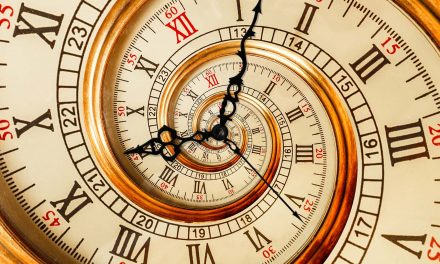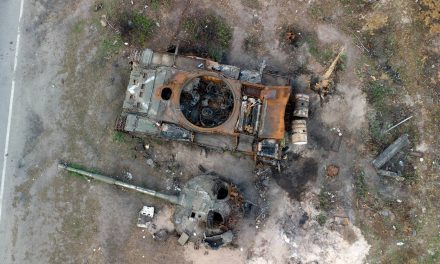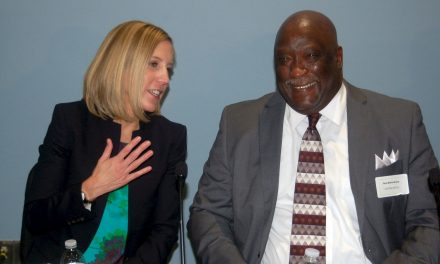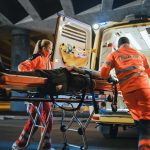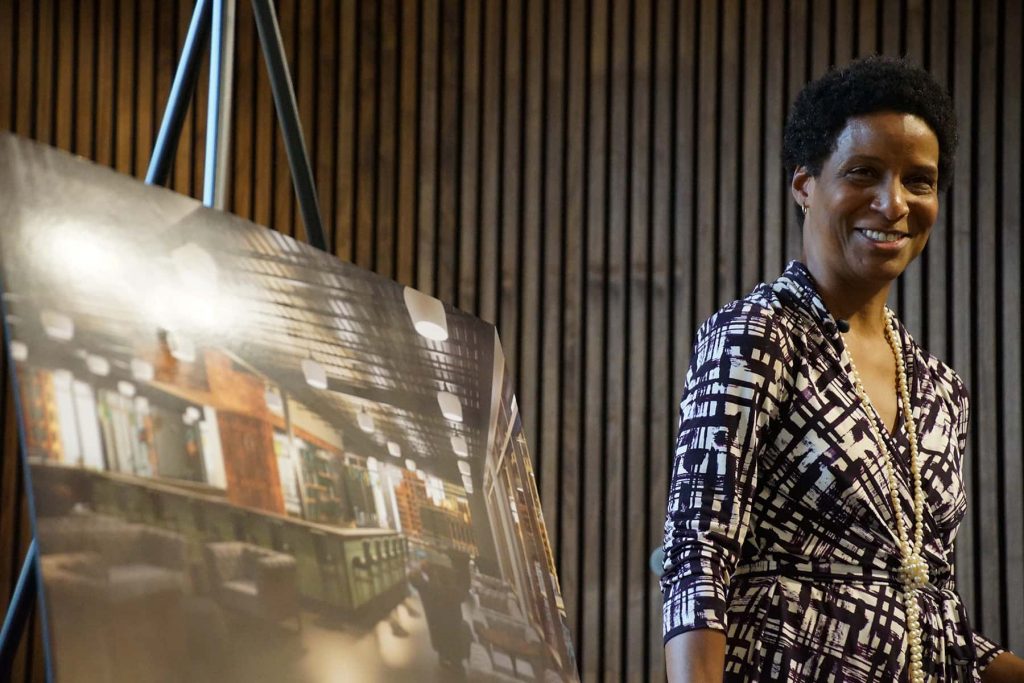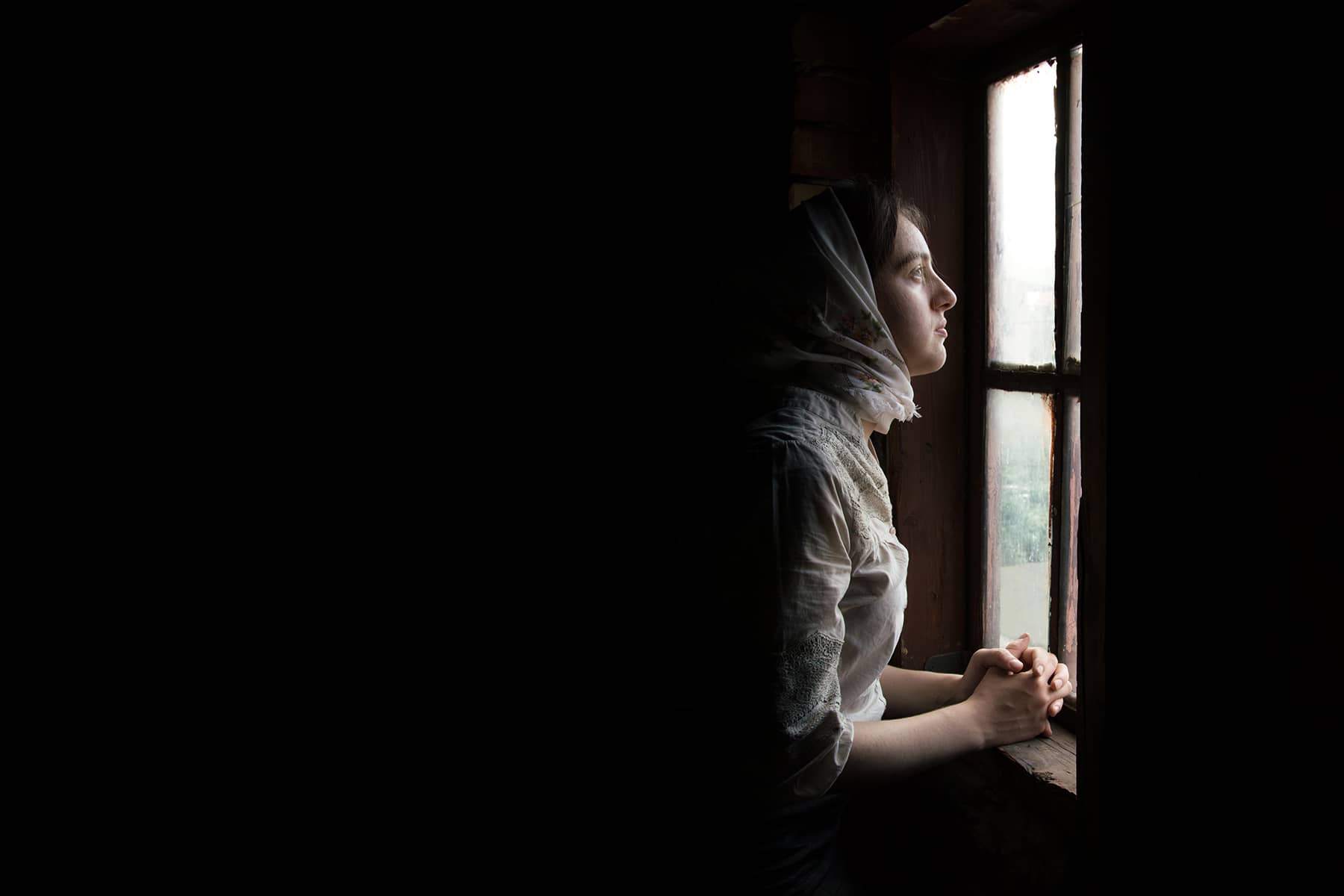
“Everywhere, when we liberate our land, we see one thing … Russia leaves behind torture chambers and mass burials of murdered people. This was the case in Bucha and other cities in the north of the country after the occupation. This was the case in the Kharkiv region. The same we observe now in the Kherson region.” – Volodymyr Zelenskyy, President of Ukraine
On the eve of Russia’s February 24 invasion of Ukraine two organizations, one French and the other Ukrainian, began one of their regular meetings in Paris to discuss plans for a Holocaust memorial complex at Babyn Yar, the site of mass killings during the Nazi occupation of Kyiv.
Russian President Vladimir Putin had not yet announced the beginning of what he refers to as Russia’s “special military operation” in Ukraine, but the writing was on the wall, says Patrick Desbois, a French Catholic priest who has devoted much of his life to researching the Holocaust and more modern atrocities elsewhere, including in Guatemala, Syria and Iraq.
“I asked my colleagues not to stay in the meeting and to go back to Ukraine,” said Desbois. He said he wanted them to head home to be with their families as soon as possible.
When someone in the meeting asked Desbois, “Father, will you come to our own mass graves?” the words stuck with him. What may have been a passing comment foreshadowed the extreme violence that was to follow.
News of atrocities committed by Russian soldiers soon emerged, and Desbois’ Paris-based Holocaust research organisation, Yahad-In Unum, began to shift focus to history in real time, deploying its well-honed skills to investigate possible war crimes under way.
“I have been active in Ukraine for 20 years and I know more people in Ukraine than France, so I reconnected with this network and we immediately began employing two people on the ground to track witnesses through social media,” said Desbois.
In other parts of Eastern Europe, Yahad-In Unum continues its historical research and is focusing on the Nazis’ “forgotten victims” like the Roma. But in Ukraine, all that has been put on hold so they can help gather evidence for future prosecutions. So far, the group has collected testimonies from more than 100 individuals across Ukraine about possible massacres and abuses.
“The idea is to win in court and to prove that our slogan ‘never again’ should be louder than before the war,” said Maksym Rabinovych, head of the Babyn Yar Memorial Center, Yahad-In Unum’s partner in Ukraine.
Boiler room
For Marco Gonzalez, the director of Yahad-In Unum, one recent case sticks out – a group of mostly men in Novyi Bykiv, 100km (62 miles) east of Kyiv, who were captured by Russian troops and accused of working with the Ukrainian army. The researchers corroborated separate witness accounts.
One of those young men was Maksym Didyk, a 21-year-old car mechanic who described – at times in forensic detail – his nearly two weeks in Russian captivity.
Just days after the invasion began, Russian forces arrived in the village and neighbouring ones, taking over buildings and houses, as their push towards Kyiv stalled.
On March 19, Didyk was taken prisoner at a Russian checkpoint on the way back from tending to his family’s cattle, he told the researchers, adding that he was accused of passing on information to Ukrainian forces.
Didyk described being badly beaten by several interrogators, and eventually taken to a building known as the House of Culture, where Russian troops were based. He was locked up in a grim, airless boiler room near the site and over time was joined by groups of other prisoners – more than 20 in total – who at different periods were tied up and blindfolded in the same room. A tiny cellar below, where one could only slump or sit, held up to seven prisoners at a time.
Didyk narrated the exact locations and details of the beatings he received. “On the head, face, all over the body, ribs, knees, legs, chest, all over,” he recalled. He said that one soldier heated an iron rod and threatened to burn him with it.
Prisoners were only occasionally allowed out to use the bathroom in groups: “They did not give [much] food so that we would not need to go to the toilet.”
Another prisoner, Ivan, a 20-year-old from nearby Nova Basan who was captured alongside members of his family, was held for five days. He corroborated much of what Didyk said.
Both men spoke about killings just before the Russians withdrew from the town. According to their accounts, on March 29 a badly beaten prisoner was hauled out of the boiler room by a Russian commander. He never returned.
The next morning, the commander – a bottle of vodka in hand – returned to pick more men, at one stage telling the captives that he needed more corpses. After the Russians left town the following day, Didyk and the other prisoners fled, passing the bodies of three men who had been held with them.
‘Holocaust by bullets’
In documenting such experiences, Yahad-In Unum’s researchers have drawn on nearly two decades of work piecing together historical evidence of crimes committed by the Nazis in Eastern Europe.
Yahad-In Unum – an amalgamation of Hebrew and Latin meaning “together in one” – was founded in 2004 after Desbois, who is based in France, visited Ukraine, where his family had a historical link. During World War II, his grandfather and a group of other French soldiers were taken captive by German troops and deported to the western Ukrainian town of Rava-Ruska.
During the priest’s personal pilgrimage to the town, the mayor there introduced him to survivors who told stories of the Nazi occupation and killings in the surrounding forests. The mass killings at Rava-Ruska were among countless others in nearby villages, the mayor told the priest – awakening what would become Desbois’ lasting obsession.
The following year, Desbois founded Yahad-In Unum to document the “Holocaust by bullets” in the former Soviet Union. Though the most familiar symbol of the Holocaust is the concentration camp, millions of Jews were massacred by Nazi mobile killing units and buried in mass graves all over Eastern Europe. Yahad-In Unum estimates that in western Russia, Belarus and Ukraine, about 2.2 million Jews were executed in this way during World War II, about 1.6 million of them in Ukraine alone.
The organisation consists of a core of about 15 people in Paris, and several others in Eastern Europe who work with local cameramen and photographers. Their research on the Holocaust has drawn heavily on archival material, notably German archives and a massive trove of documents emanating from a Soviet commission that looked into Nazi atrocities committed against Soviet citizens.
The commission’s lengthy official title – typical of Soviet bureaucracy in its wordiness – is often shortened to “The State Extraordinary Commission for Investigation of Nazi War Crimes”. It was closed to the public until the collapse of the Soviet Union in 1991.
Gonzalez said that researchers assemble archival material before they head into the field. Then a team of at least three people will go to a village, knocking on doors, sometimes visiting the local market in search of old people who were alive at the time of the Nazi occupation.
Usually, a videographer and photographer will shoot the interviews.
“What is amazing is that people want to talk,” he said. “In many cases, the witnesses bring us to places where Jews were killed, and in many cases, there’s nothing there … these places are forgotten in the middle of the forest.”
Yahad-In Unum has assembled an extensive database, including archival records and video interviews, which has been digitised and turned into an interactive online map pinpointing the sites of hundreds of massacres.
More than 1,000 red dots indicate the sites of documented massacres spanning Estonia in the north to the Caucasus in the south – the full sweep of the Nazi advance. Nearly 2,000 blue dots represent sites where research is in progress.
Babyn Yar
One of those red dots marks a neighbourhood in the north of Kyiv – the site of one of the most infamous episodes in the “Holocaust by bullets”. In late September 1941, in what was one of the largest mass executions of the war, 33,771 Jews were killed over two days and buried in a ravine known as Babyn Yar. For the rest of the Nazi occupation, Babyn Yar continued to be a killing field, where more than 100,000 Jews, Roma, communists, Ukrainian nationalists and others deemed by the Nazis to be undesirable or “sub-human” were slaughtered.
After the collapse of the Soviet Union, the newly independent Ukraine began re-examining the violence and authoritarianism of its past. This uncovering of hidden histories, after decades of Soviet censorship, began a new reckoning with the country’s collective memory through new debates, literature and art.
The history of Ukraine’s Jews and the Holocaust was one area of the past that began to receive the kind of attention that was previously off-limits. Before, the official Soviet narrative of World War II had largely expunged from the historical record the ethnoracial nature of Nazi aggression, denying the true extent of Jewish suffering. Soviet historiography held that all citizens were equally victims of fascism.
Today, Babyn Yar is commemorated in a very different way than back then. The wooded park houses a patchwork of monuments. This includes the original Soviet-era statue from the 1960s of a giant knot of contorted figures – men, women, a child – some of them in strikingly defiant poses. A plaque commemorates the “citizens of Kyiv and prisoners of war”. It is a piece of cold, socialist realism that lacks the subtle mournfulness of other Holocaust monuments.
After the collapse of the Soviet Union, monuments like a sculpture of a menorah began to paint a clearer picture of the different groups of people killed at Babyn Yar.
More recent constructions include a life-sized wrought iron wagon to commemorate the Roma victims, a “wailing wall” of coal with crystals jutting out of it, and an 11-metre (36-foot)-tall wooden block completed in 2021 that can be cranked open to form a functioning synagogue.
The eclectic mix of monuments lends a theme park-like look to the area, but beyond the purely commemorative aspect of Babyn Yar there have been efforts to turn it into a hub of information on the “Holocaust by bullets.”
Desbois served as chair of the science committee of the Babyn Yar Memorial Center, which takes a scientific, rational approach to uncovering the past; it has traced 159 alleged Nazi-era perpetrators of the massacre. Other efforts are under way to digitise archival material and create a list of names of those killed at Babyn Yar – a sort of “digital cemetery”, said Rabinovych, the head of the memorial centre.
Rabinovych, who was appointed chief executive in February just days before Russia’s invasion began, said that a project to develop the site had a forecasted budget of $200m over 10 years, which envisioned “the biggest and most modern” Holocaust centre in Eastern Europe, including a museum complex.
The project has not been without controversies. A proposal by the artistic director, Russian filmmaker Ilya Khrzhanovsky, to incorporate virtual reality features to lead visitors on an immersive experience was criticised as a vulgar, Hollywoodised form of Holocaust remembrance. Funding from Russian oligarchs and the influence of private interests over the project were even bigger concerns.
Russia’s invasion, however, halted these grand plans.
Russian troops withdrew from the outskirts of Kyiv in early April, but there are signs everywhere that war had come close to Babyn Yar. A nearby television tower bears the scars of a Russian missile attack that happened on March 1, and trenches, sandbags and anti-tank obstacles course along sections of the park. The first museum planned for the site, designed in the shape of an ancient burial mound, was under construction when the war began and remains incomplete.
The memorial centre has had to refocus its efforts. Only 30 percent of its original staff is still at work, and two major Russian backers of the project – billionaires Mikhail Fridman and German Khan – were removed from the Babyn Yar board.
The priority now is the present. The memorial centre is working closely with Yahad-In Unum to track down witnesses of modern-day Russian atrocities and record their testimonies.
Unlike elderly Holocaust witnesses, who are recalling events from many decades ago, these new accounts are just days, weeks or months old. Investigators can obtain highly detailed information about perpetrators.
Rabinovych said that Yahad-In Unum has been training the memorial centre’s team of five in its research methodology, and they have already conducted dozens of interviews.
Investigating recent atrocities
Over the years, Yahad-In Unum has branched out to investigate more recent crimes against humanity in Guatemala, where Gonzalez is from, as well as ISIL (ISIS) atrocities against Yazidis in Iraq. The point is, increasingly, to collect testimony that will stand up in court. It is not just about the historical record. “You can’t go to the police with testimonies of oral memory,” Desbois said. “You need precision.”
Years of work on ISIL investigations have helped Yahad-In Unum refine its approach and detailed line of questioning. Verification and corroboration are key.
“It’s pictures, text, details, and we emphasise topography and corroborative testimony,” said Desbois. “For example, if we interview a girl in Syria and she says she was underground with no windows, and afterwards we interview another girl who was in the same jail and she says it was the second floor, then something is not working.
“So, we reinterrogate, confirm the exact topography and sometimes discover they weren’t in the same place. It’s not why did you do that or how, but more where, when was it, with physical details.”
Desbois is economical with words, and his unembellished conversational manner has clearly set the tone for Yahad-In Unum interviews, videos of which are always dryly matter-of-fact. In recorded accounts of Nazi-era crimes, witness after elderly witness recounts, often devoid of emotion, what happened on the day in question and the minutiae of what they saw – the weather, time, surroundings, the clothes of the victims, the movements of the perpetrators.
In Belgium and Germany, Yahad-In Unum’s painstaking attempts to piece together a more recent past have helped the state prosecute ISIL members for abuses against ethnic Yazidis in Iraq and Syria that took place after 2014.
Thousands of Yazidis were killed, made to convert to ISIL’s rigid interpretation of Islam, or forced into sexual slavery in what United Nations investigators have classified as genocide.
Kyiv-born Andrej Umansky, a lawyer, historian and board member of Yahad-In Unum, represented a Yazidi woman in two separate trials in Germany.
“Germany has a universal concept of competence,” said Umansky. “Even if a perpetrator isn’t German and the crime was not committed in Germany, when it comes to crimes against humanity, Germany has the ability to prosecute and is very active on this topic.”
Umansky said that many suspected ISIL fighters from Europe, especially women, were brought back to Germany from camps like Al-Hawl in Syria, which houses many ISIL members and sympathisers.
“For one Yazidi woman we were able to help her as witness against two German ISIS women in two separate trials,” said Umansky. Trials like these – both of which led to prison sentences for the accused – helped the UN determine that genocide was committed against Yazidis.
Yahad-In Unum has interviewed hundreds of ISIL victims, and the organisation’s work has underpinned several investigations in Belgium – a recruiting ground for many ISIL members – which has been proactive in prosecuting members of the group.
Russian crimes
Yahad-In Unum has a similar outcome in mind in Ukraine, where it is working with the Babyn Yar Memorial Center to collect evidence of torture, rape and killings of civilians to be used in trials of Russian soldiers for potential war crimes.
Today, Yahad-In Unum has four people working full-time in Ukraine to trace survivors and witnesses, mostly via social media platforms and channels. “Without the social media we could not do our work,” said Desbois.
The team on the ground moves quickly after learning of a new incident, tracking down witnesses who are interviewed by Yahad-In Unum’s team remotely, to avoid having too many people based in a conflict zone.
The team tends to focus on cases that are lesser known. “In Bucha we didn’t do a lot, everyone was there,” Desbois said, referring to the rights organisations and media who were present in the town outside Kyiv where hundreds of civilian bodies were recovered after Russia’s withdrawal. They also focus on cases where evidence is strong and denials even stronger.
Something that sets these investigations apart from the ISIL investigations, Yahad-In Unum’s staff said, is having to counter the Putin regime’s propaganda. While ISIL was open about many of its abuses, which the group attempted to justify on religious grounds, Putin’s regime relies more on disinformation.
Desbois said that Russian officials often won’t deny that an attack happened, but will deny the identity of the victims and claim civilian targets were, in fact, military targets.
“When a mall was bombed they said it was not a mall that was bombed, it was a military place,” he said. “So we double-checked there were no military around and also we found eight persons working in the mall, so we could criss-cross the testimonies of the people because one witness is not enough.”
According to Umansky: “Gathering witnesses to Russian crimes has not only a purpose of justice but also of proof against Russian denial.”
Desbois sees the role of the interview as not dissimilar to Catholic confession. For him, determination of guilt lies with his God and the courts, not his team of interviewers and researchers. “We must suspend our judgement,” said Desbois, “we don’t show our point of view.”
The approach is disarming, and allows witnesses to speak more openly when they inhabit the “grey zone” – a term coined by Holocaust survivor Primo Levi to refer to the morally ambiguous positions between victim and perpetrator, and acts of compromise and collaboration inside the concentration camps. Desbois offered the example of Nazi soldiers shooting Jews: They are drunk and want locals to bring them sausages and vodka, “The woman who brings it is in the grey zone,” he said.
For Desbois, this best describes the position of most witnesses Yahad-In Unum interviews. But it also describes most Russian soldiers in Ukraine. “There is no war without grey zone. You cannot have a war full of bad people, you don’t have enough bad people to do that … Putin is putting a lot of innocent Russians in the grey zone and he is using them.”
Mіcаh Rеddy
Аrt Mаrі
Originally published as How Holocaust historians are unearthing Ukraine’s present

